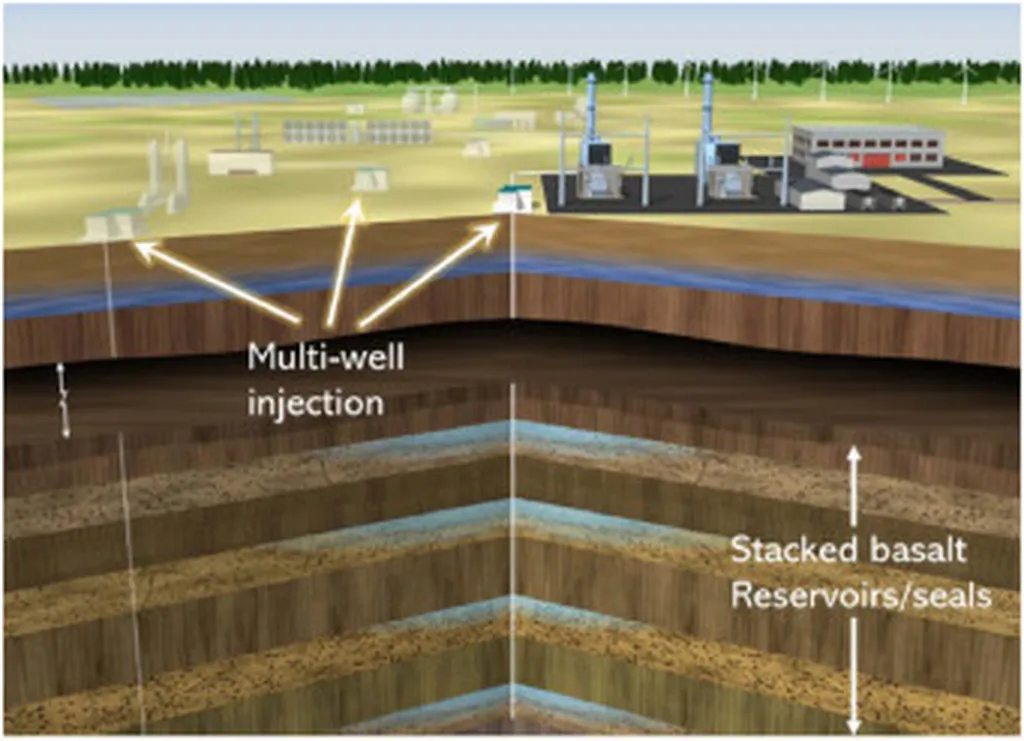In the quest to mitigate climate change, scientists and energy professionals are exploring innovative solutions to capture and store carbon dioxide (CO2). A recent study published in the journal “Earth Science, Systems and Society” sheds light on the potential of basalt reservoirs for geological CO2 storage, both onshore and offshore. The research, led by Conor M. O’Sullivan of Amentum UK Ltd, compares the geological, economic, and social aspects of CO2 storage in these formations, using two basalt formations from the Republic of Ireland as case studies.
Basalt reservoirs, formed from volcanic activity, offer promising sites for CO2 storage due to their unique mineral composition. When CO2 is injected into these reservoirs, it reacts with the minerals to form stable carbonate minerals, effectively locking away the carbon. “Basalt reservoirs offer a natural solution for CO2 storage, with the potential to store gigatonnes of CO2,” O’Sullivan explains.
The study compares two basalt formations in Ireland: the Limerick Igneous Suite onshore and the Druid Formation offshore. Offshore reservoirs, while more expensive to develop, offer larger storage resources. However, both formations provide gigatonne-scale theoretical CO2 storage capacity.
The research also delves into the social and economic aspects of CO2 storage. Reviewing public perception studies on wind energy, the study challenges the notion that offshore projects face less opposition due to their distance from communities. Instead, it finds a general skepticism towards carbon removal technologies, with concerns that they may hinder broader decarbonization efforts. “It’s clear that all stakeholders want to be involved throughout project development,” O’Sullivan notes.
The study highlights lessons from offshore natural gas projects, emphasizing the importance of engaging with local communities. It also points out policy hurdles that need to be overcome, such as legal limits on storage volumes, to reconcile climate ambition with legislative capacity.
The findings of this research could significantly shape future developments in the energy sector. As the world seeks to reduce atmospheric CO2 concentrations, basalt reservoirs offer a promising solution for geological CO2 storage. However, the successful implementation of these projects will require careful consideration of geological, economic, and social factors, as well as effective engagement with local communities.
As the energy sector continues to evolve, research like this provides valuable insights into the potential of innovative technologies and strategies for mitigating climate change. With the right policies and community engagement, basalt reservoirs could play a crucial role in our transition to a low-carbon future.

